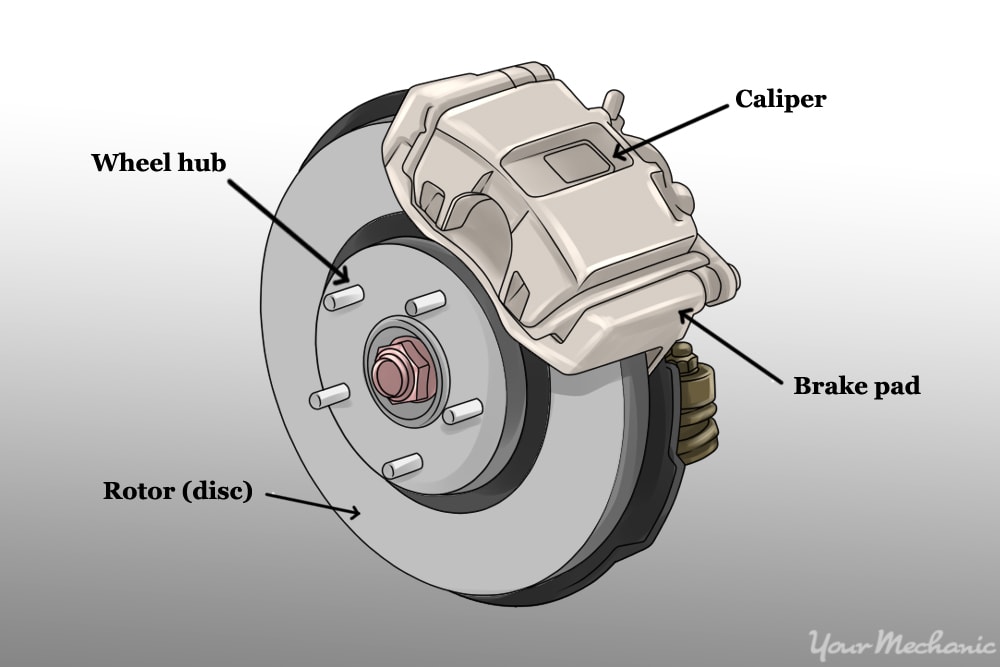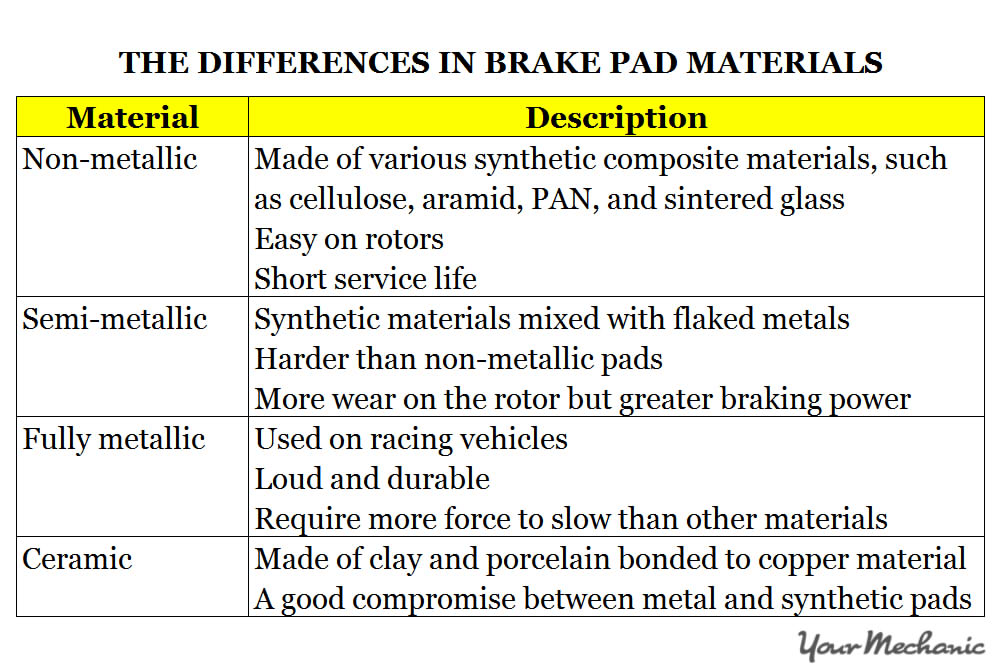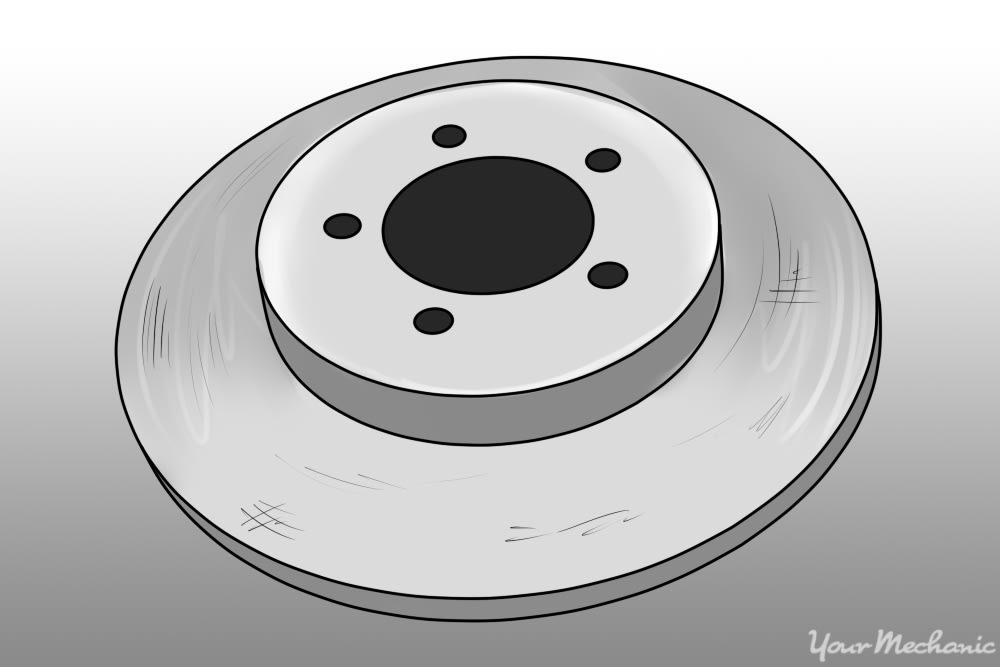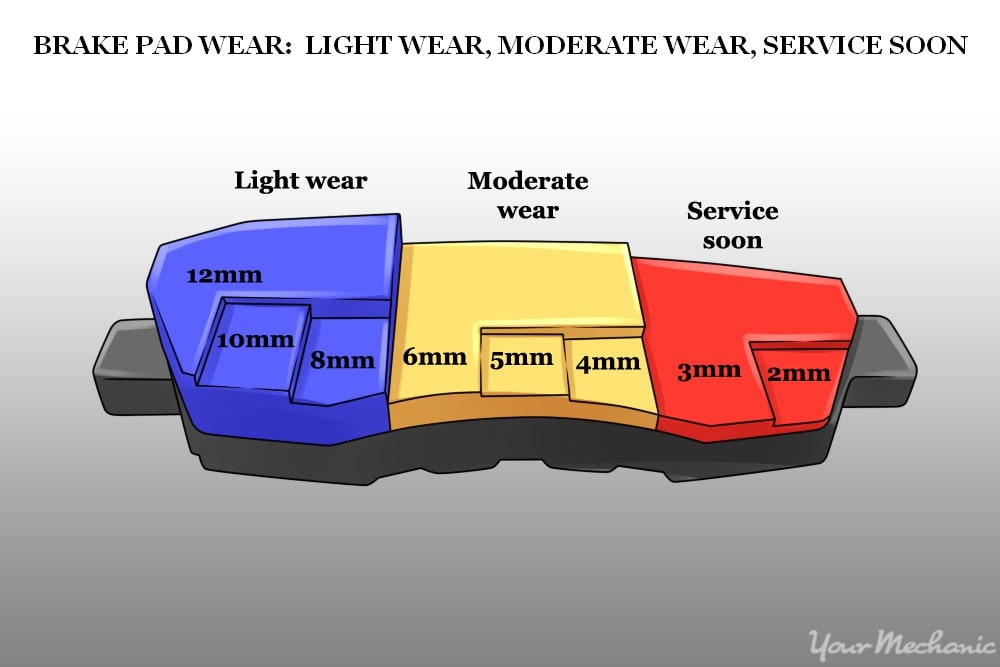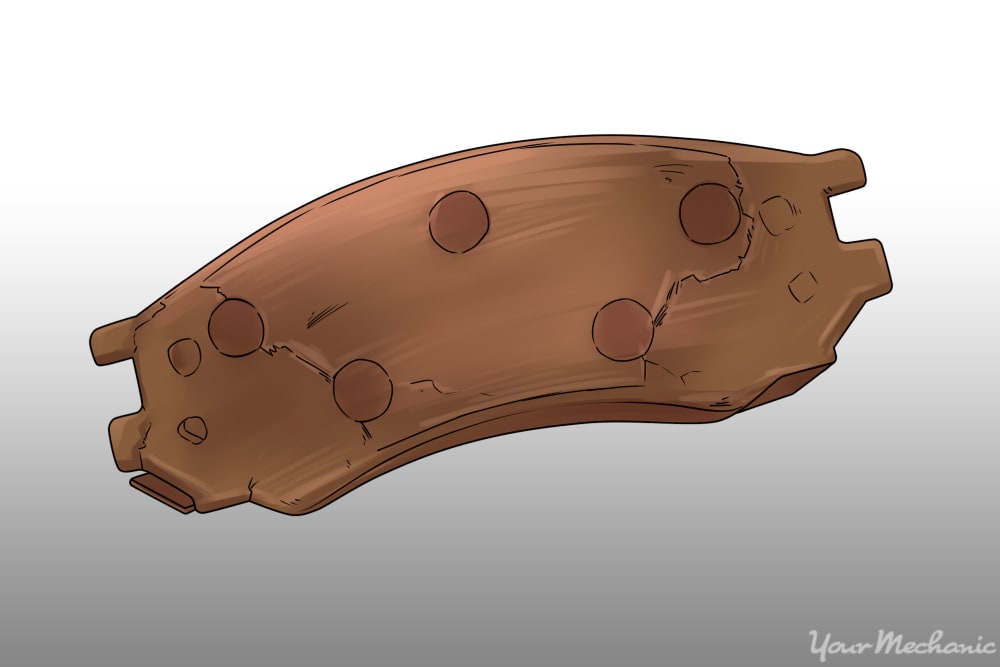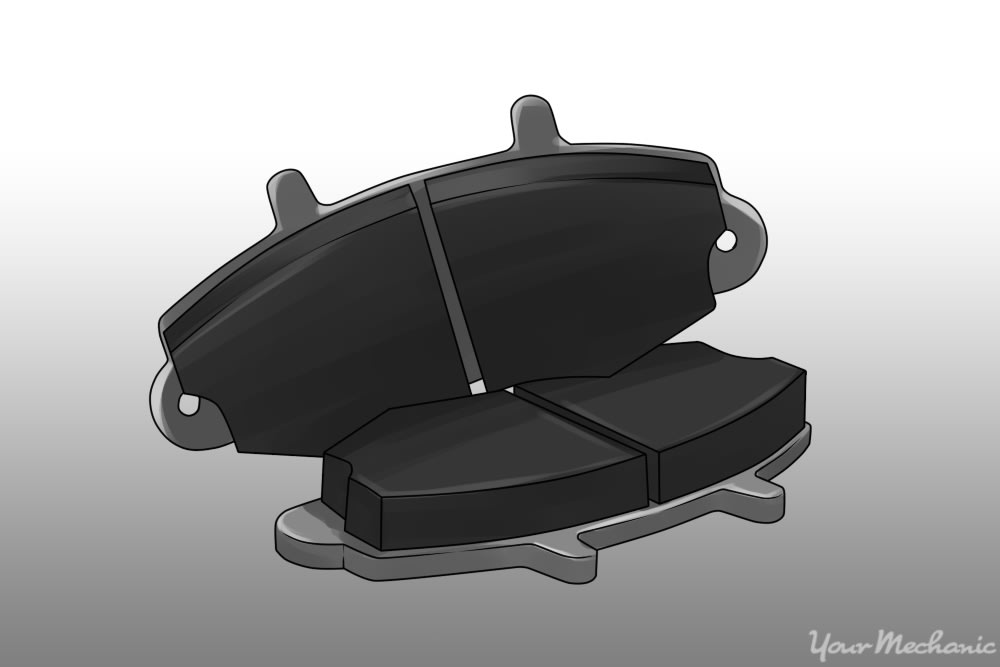

A vehicle with disc brakes slows or stops by applying pressure via brake pads to a rotor attached to the wheel hub. Brake pads that show uneven wear generally are out of alignment, and depending on the wear pattern this type of wear could mean a variety of things. Understanding the wear pattern on your brake pads lets you easily find a solution to fix any existing problems.
Part 1 of 2: How brake pads work
To understand brake pad wear properly, you first need to understand how brake pads work. The process starts when you press the brake pedal and results in stoppage according to how hard you press the brake pedal.
Step 1: Understand brake lines. The brake lines hold the brake fluid, which is forced into a long, thin pipe when the brake pedal is pushed.
Brake fluid is actually hydraulic fluid that pushes down a piston at the end of the brake line, which in turn pushes the brake pad toward the rotor, slowing or stopping the vehicle depending on the force used.
The pressure transmitted via the hydraulic brake fluid is much greater than the force the person driving could apply alone. Hydraulic pressure is applied on each wheel evenly when the brake pedal is pressed down.
Step 2: Understand the brake calipers. The brake calipers hold the pads in place and squeeze them against the rotor, providing the friction to stop the vehicle.
When installing brake calipers on your vehicle, you can choose between floating and fixed calipers. Floating calipers move in and out relative to the rotor and come with one or two pistons on the inside caliper. The pistons of a floating caliper push the whole caliper when braking, creating friction from both calipers.
Fixed calipers have pistons on both the inside and outside caliper. Fixed brake calipers give better performance than floating and are preferred for this reason.
Step 3: Understand the brake pads. A brake pad is composed of a steel backing plate with one side covered in friction material.
The purpose of the brake pad is to grip the rotor when the brake pedal is pressed, slowing or stopping the vehicle they are installed on. When choosing brake pads, you can choose between a few different materials. The table below should help you to understand them more.
Step 4: Understand brake rotors. The other part of the equation when stopping a vehicle, brake rotors give the brake pads something to grip and slow the axle when slowing or stopping a vehicle.
Rotors are a very durable component lasting through many brake pad changes. Usually manufactured of cast iron, some other materials include composite materials, such as reinforced carbon or ceramics.
- Warning: It is important that you change your brake pads when they wear out. Not changing them promptly can lead to scarring of the brake rotor surface and reduction in the performance of the rotor.
Part 2 of 2: Brake pad wear patterns
The wear pattern on a brake pad says a lot about your brake setup. In general, it indicates if the pads are installed incorrectly and need adjustment. You should have your brake pads inspected regularly to make sure that they do not need replacing. On average, you should replace your brake pads every 50,000 miles, though that can vary according to the brake pad durability, the environment you drive in, and your own personal driving habits.
Step 1: Look for even wear. You want even wear across both the inside and outside brake pads on each wheel.
Signs of even brake pad wear are indicated by equal amounts of material on both pads for each tire.
- Tip: You should seek brake pads with wear indicators. Wear indicators let you know when it is time to change your brake pads either by sound, sensors, or by visually inspecting the indicator on the brake pad.
Step 2: Be aware of outer pad wear. For this wear pattern, the outer brake pad has much less material than the inner pad.
This type of wear is caused when the outer brake pad continues to rest against the rotor, even when the caliper is released. This is a sign of malfunctioning guide pins, bushings, or slides. The easiest way to fix this problem is to replace the caliper and the brake pad.
Step 3: Be aware of inner pad wear. Signs of excessive wear on the inner brake pad are a strong indicator that the pad is resting against the rotor even after the caliper has released.
This type of wear pattern is a sure sign of a worn seal, damage to the caliper, or corrosion from exposure to wet conditions. As with the excessive wear to the outer brake pad, replacing the caliper and brake pad represents the easiest way to fix this kind of wear.
Step 4: Know the signs of tapered pad wear. A third type of wear pattern, tapered wear on a brake pad, is a strong indicator that the brake pad is installed incorrectly.
The pad will appear to slope from one portion of the pad to another. Wear of the guide pins and the sliding caliper seizing on one side of the pad is also a possible cause of such wear. To fix this problem, replace the offending caliper in addition to the brake pad.
Step 5: Look for cracked, glazing, and lifted edges. A glazed or cracked brake pad with lifted edges is the sign of a variety of problems.
Most common causes for such distress in a brake pad are overuse, a malfunctioning caliper, or a defective pad. In addition, a parking brake that is not fully retracted can cause such deformity of the pad.
The easiest way to fix this problem is to replace the pad and adjust the parking brake if needed.
- Tip: It is also important that you break-in a brake pad properly. Bedding-in transfers a thin layer of transfer film to the rotor surface, which minimizes brake judder, and is accomplished through the gradual buildup of heat in the rotor surface and the brake pad material. The bed-in procedure can take hundreds of miles, during which time you should avoid heavy braking.
Step 6: Look for overlapping friction material. In this type of wear pattern, the top edge of the pad overlaps the top of the rotor.
Common causes include installing the wrong-sized brake pads or rotors on your vehicle or by excessive wear on the guide pins or caliper. To fix this problem, install the correct-sized brake pads or rotor on your vehicle.
Uneven wear on your brake pads is easy to fix. By making the necessary adjustments or by installing the correct size parts, you can get back on the road in no time. If you have any questions about your brake pads, rotors, or calipers, you can Ask a Mechanic for more information. You can also have one of our expert mechanics replace your brake pads for you if you do not feel confident in doing the job yourself.



